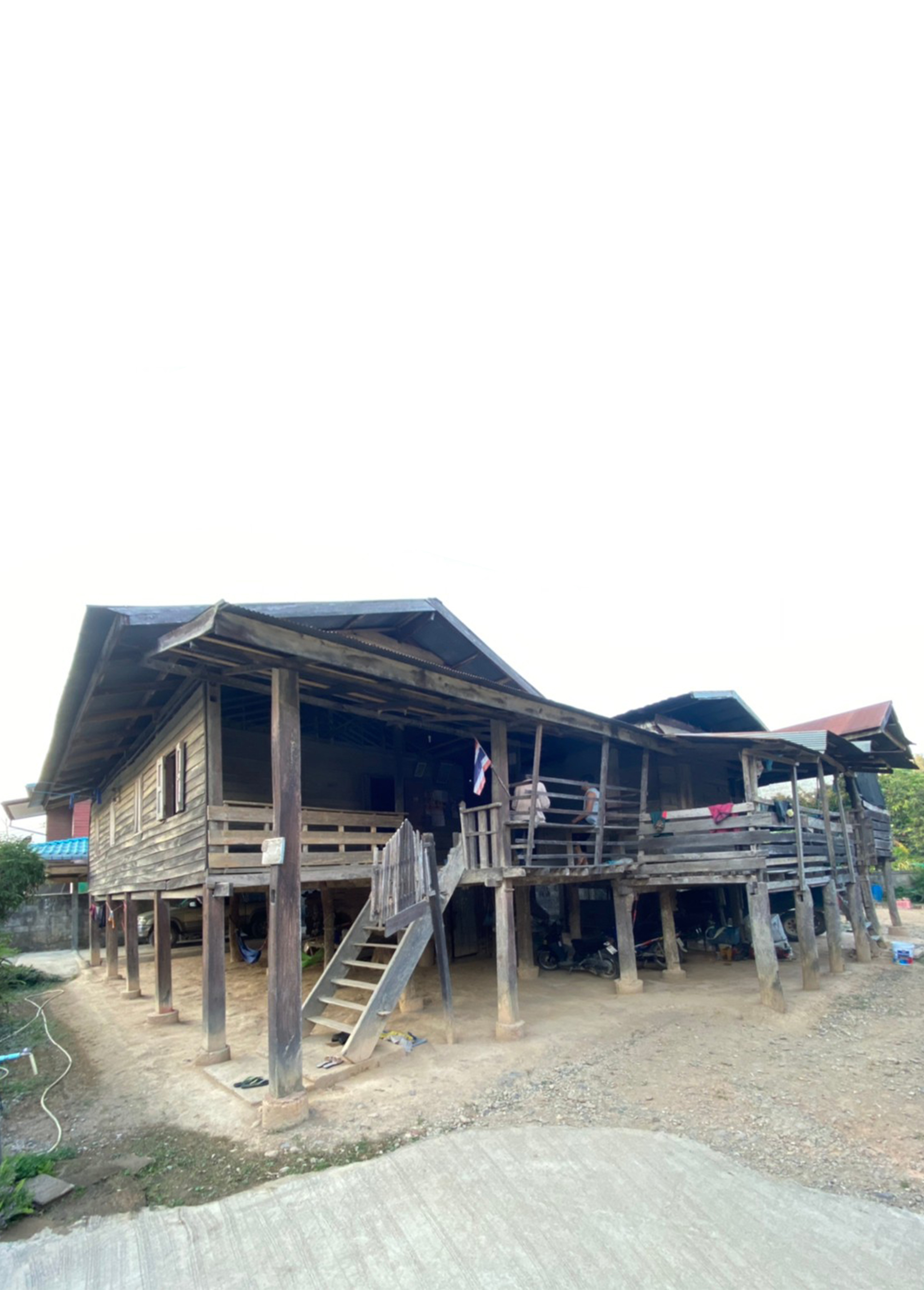พลวัตสถาปัตยกรรมพื้นถิ่น: กรณีศึกษา เรือนไทลื้อ บ้านห้วยเม็ง จังหวัดเชียงราย
Main Article Content
บทคัดย่อ
ไทลื้อ เป็นกลุ่มไทที่มีการอพยพย้ายถิ่นฐานมาอย่างยาวนาน มีการแลกรับวัฒนธรรมจนมีพลวัตทางสถาปัตยกรรมที่แตกต่างไปตามบริบทที่ตั้งอยู่ บทความนี้ศึกษาลักษณะเฉพาะของเรือนไทลื้อในพื้นที่บ้านห้วยเม็ง จังหวัดเชียงราย ประกอบด้วยการวิเคราะห์ ผังบ้าน รูปทรงของเรือน ผังพื้น โครงสร้าง วัสดุ และภูมิปัญญาภายในเรือน เพื่อให้เกิดความเข้าใจในรูปแบบสถาปัตยกรรมที่มีความเฉพาะตัวจากการรับเอาวัฒนธรรมล้านนา วิธีวิจัยเป็นวิจัยเชิงคุณภาพ โดยการสำรวจภาคสนามโดยเลือกจากเรือนที่มีอายุ 20 ปีขึ้นไป จำนวน 15 หลังคาเรือน ใช้การสำรวจและการสัมภาษณ์กลุ่มปราชญ์ ผู้นำชุมชนและเจ้าเรือน แล้วนำข้อมูลที่ได้จากภาคสนามมาวิเคราะห์โดยแยกแยะและจัดเรียงข้อมูล วิเคราะห์ถึงความเปลี่ยนแปลงของรูปแบบสถาปัตยกรรมไปตามปัจจัย แล้วสังเคราะห์ข้อมูลที่ได้จากวรรณกรรม เกี่ยวกับพลวัตของสถาปัตยกรรมพื้นถิ่นเพื่อเติมเต็มความรู้ในศาสตร์สถาปัตยกรรมต่อไป
Article Details
เอกสารอ้างอิง
Arpakorn, R. (1996). Tai Lue. (In Thai) [Tai Lue]. Bangkok: Matichon.
Jiranakon, Y. & Sethakul, R. (2001). Prawattisat Sipsongpanna. (In Thai) [History of Sipsongpanna]. Bangkok: Wititat.
Juntakat, P. (2020, October 12). Interview. Community Leader, Baan Huai Meng.
Oranratmanee, R. (2009). Sathapattayakam phuen thin : karnsueksa wijai lae karn patibat wichachip sathapattayakam. (In Thai) [Vernacular architecture : education research and professional practice]. Academic Journal Faculty of Architecture, 8(1), 55-56.
Panin, O. (1996). Baan lae mubaan phuenthin. (In Thai) [Vernacular house and village]. Bangkok : Royal Society of Siamese Architects Patronage.
Saicharoent, C. (2004). Huean Tai Lue. (In Thai) [Tai Lue vernacular house]. Proceeding of Hompoom Sathapattayapatha’04: Conference (pp.199–227). Chiangmai: Faculty of Architecture, Chiangmai University.
Temeeyapan, W. (2016). Sathapattayakam phuenthin : ruam botkhwam thang wichakarn nai ngan sathapattayakam phuen thin. (In Thai) [Vernacular architecture : academic articles on vernacular architecture]. Bangkok: Triple Group.
Wongwigkarn, K., et al. (2005). Karn priap thiap phumpanya nai pattanakarn khong baan phuenthin Tai Lue rawang phuentee lueak san nai amphoe Chiangkhum changwat Payao kap phuentee lueak san nai kwaen Sipsongpanna monton Yunnan satharanarat pachachon chin. (In Thai) [Comparison of local wisdom in development of Tai Lue vernacular house between selected area in ChiangKhum, Payao, Thailand and the seiected area in Sipsongpanna district, Yunnan, the people’s republic of China]. Bangkok: Thailand Research fund.
Zhu, L. (1994). Chonchat Tai : sathapattayakam lae khanob thamniam prapheni Tai nai Sipsongpanna. (In Thai) [The Dai or the Tai and their architecture & customs in Sipsongpanna]. Bangkok: O.S. Printing House.


